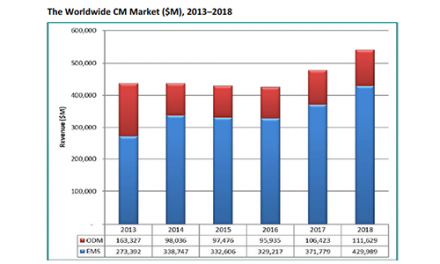Electronics OEMs Must Take Action to Remedy Supply Chain Negativities
By Mo Ohady, Digicom Electronics, Inc.
 The global supply chain crisis continues to plague the electronics manufacturing industry and it isn’t slowing down. This is a global problem that isn’t stopping. The impact is being felt across the board, small organizations to large, resulting in delayed production, deliveries, income, and loss of revenue, just to mention some of the issues.
The global supply chain crisis continues to plague the electronics manufacturing industry and it isn’t slowing down. This is a global problem that isn’t stopping. The impact is being felt across the board, small organizations to large, resulting in delayed production, deliveries, income, and loss of revenue, just to mention some of the issues.
The larger scale impact is inflation, due to scarcity and stagnation, and reduced earnings. There is the possibility that this disruption may worsen in the future.
To avoid the unfavorable sinuous effect scenario, manufacturers, after struggling with material shortages, may be weary of creating a glut, even if their immediate constraints have abated. This concern is already visible and transparent, as can be seen in the overwhelming increase in Non-cancellable, Non-returnable (NCNR) terms that are required when placing purchase orders. However, this has yet to reach the priority it deserves in the hierarchy of concerns for future growth and income recognition.
Businesses have enjoyed nearly unfettered global trade for decades, but the fact is clear, this is no longer the case. From increasing disputes in trade agreements across countries and regions, to climate change affecting manufacturing and logistics, the supply networks that businesses have formed their inventory management strategies around are showing stresses and fractures that are incapable of full support.
Businesses that continue to expect a steady supply of readymade and available products from global sources are likely to be left disappointed and made to wait for long lead times—if the items ever get there.
All this to say, there’s simply no point in waiting for things to go back to what they were before. This may well be the new norm.
Why? This time supply shortages are across the board and point to structural weakness, not just in one geographic location or region, but globally. It isn’t just a shortage of raw materials or labor, it is also about transportation and fulfillment, finance, and the whole support structure. As such, it will take a global effort to ease the bottlenecks, even as COVID’s influence is diminished
What would need to happen to solve the ongoing supply chain issues? The solution seems likely to be either an increase in capacity or a fall in demand.
Abundant supply hurts. Restrictive supply helps.
Let’s look at the ramifications of these bold statements! Look at history. We’re now getting used to quoted lead times of 52–60+ weeks. With all the variables, how can this forecast be reliable? How can you have confidence?
Remedies
It’s time to take an active role in managing this part of your business. The likelihood is that this situation is not ending anytime soon. Don’t wait or expect things to return to the way they were.
This means improving skills in inventory management, establishing and nurturing new vendor contacts who are able to help (these vendors may not be the usual go-to, franchised distributors you are accustomed to working with), and unclog the bottlenecks that could release partial or larger quantities of products that otherwise would be sitting on your shelves waiting for some critical parts. Manufacturing lines or processes might have to change, and products be retooled.
On the front side, a vendor must scrutinize the bill of materials (BOM) content of their products fully, identify the risk items, and share the information with the end user. If a component has no visibility, is not listed as available, and carries a multi-month lead time, it should be given the priority it deserves. Gating items should be highlighted and prioritized. If a part is only available in limited quantity and/or listed by just one distributor, chances are that once this part is sold, you may not be able to obtain any more for many months to come. To ensure continuity, a vendor must engage with the end user and plan for the project’s needs well into the future.
For Digicom Electronics, a California Bay Area EMS company, adapting remedies to deal with supply chain negativities is standard practice. Customers are advised to look ahead, and if they see something is critical, plan ahead. They’re encouraged to take a defensive posture. It’s easy to try to resist taking action because it can require a significant investment in time and money, and it is often difficult to see the critical nature of the situation.
One way to tackle supply chain issues is to forge new relationships. The vendors and avenues for purchasing in the past might no longer be available or viable. Digicom has greatly expanded its roster of vendors and has worked with them more extensively.
If you are an electronics manufacturer, especially one who manufactures essential products such as medical devices, aerospace products, or military equipment, you can’t afford to ignore the inconsistencies and uncertainties that are evermore present in the market. Engage your customers, vendors, and manufacturing partners to assist you, so you can move cautiously and take prudent steps. We recommend looking ahead 2 to 3 years, so you can implement remedies that address the negativities of supply chain issues in a seamless fashion.













